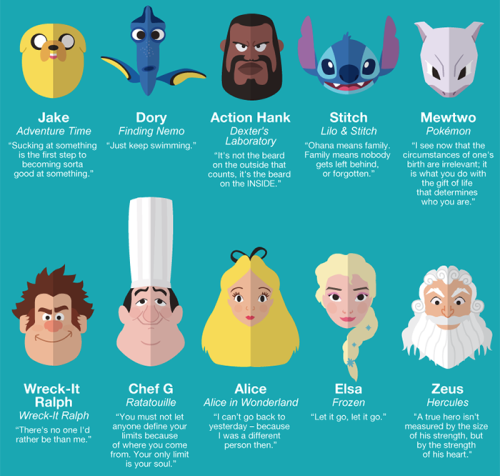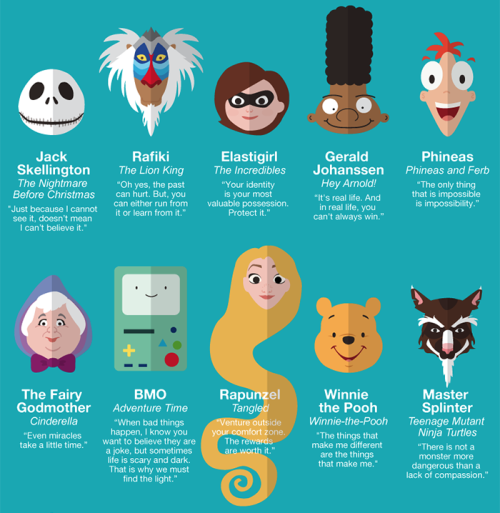‘아렌델’은 빅뱅 이후 첫 10억년 이내에 존재했던 별입니다. 우리 지구에 닿기까지
‘아렌델’은 빅뱅 이후 첫 10억년 이내에 존재했던 별입니다. 우리 지구에 닿기까지 129억년이나 걸린 것이지요!
우리 태양보다 적어도 50배 크고, 몇백만 배 밝아요. 평소에는 지구에서 볼 수 없지만, 우리와 ‘아렌델’ 사이에 있는 은하단이 렌즈 역할을 했습니다!
A View into the Past

Our Hubble Space Telescope just found the farthest individual star ever seen to date!
Nicknamed “Earendel” (“morning star” in Old English), this star existed within the first billion years after the universe’s birth in the big bang. Earendel is so far away from Earth that its light has taken 12.9 billion years to reach us, far eclipsing the previous single-star record holder whose light took 9 billion years to reach us.
Though Earendel is at least 50 times the mass of our Sun and millions of times as bright, we’d normally be unable to see it from Earth. However, the mass of a huge galaxy cluster between us and Earendel has created a powerful natural magnifying glass. Astronomers expect that the star will be highly magnified for years.
Earendel will be observed by NASA’s James Webb Space Telescope. Webb's high sensitivity to infrared light is needed to learn more about this star, because its light is stretched to longer infrared wavelengths due to the universe's expansion.
More Posts from Evisno and Others

New Discoveries about Star Formation in the Flame Nebula
Stars are often born in clusters, in giant clouds of gas and dust. Astronomers have studied two star clusters using NASA’s Chandra X-ray Observatory and infrared telescopes and the results show that the simplest ideas for the birth of these clusters cannot work.
This composite image shows one of the clusters, NGC 2024, which is found in the center of the so-called Flame Nebula about 1,400 light years from Earth. In this image, X-rays from Chandra are seen as purple, while infrared data from NASA’s Spitzer Space Telescope are colored red, green, and blue.
A study of NGC 2024 and the Orion Nebula Cluster, another region where many stars are forming, suggest that the stars on the outskirts of these clusters are older than those in the central regions. This is different from what the simplest idea of star formation predicts, where stars are born first in the center of a collapsing cloud of gas and dust when the density is large enough.
Credit: NASA/Spitzer/Chandra




Space Infographicsby Nick Wiinikka
prints/poster/phone cases and more by the artist available here
Solar System: Things to Know This Week
Mark your calendars for summer 2018: That’s when we’re launching a spacecraft to touch the sun.
In honor of our first-ever mission to the heart of the solar system, this week we’re delving into the life and times of this powerful yellow dwarf star.

1. Meet Parker
Parker Solar Probe, our first mission to go to the sun, is named after Eugene Parker, an American astrophysicist who first theorized that the sun constantly sends out a flow of particles and energy called the solar wind. This historic mission will explore one of the last regions of the solar system to be visited by a spacecraft and help scientists unlock answers to questions they’ve been pondering for more than five decades.

2. Extra SPF, Please
Parker Solar Probe will swoop within 4 million miles of the sun’s surface, facing heat and radiation like no spacecraft before it. The mission will provide new data on solar activity to help us better understand our home star and its activity - information that can improve forecasts of major space-weather events that could impact life on Earth.

3. Majorly Massive
The sun is the center of our solar system and makes up 99.8 percent of the mass of the entire solar system. If the sun were as tall as a typical front door, Earth would be about the size of a nickel.
4. Different Spin
Since the sun is not a solid body, different parts of the sun rotate at different rates. At the equator, the sun spins once about every 25 days, but at its poles the sun rotates once on its axis every 36 Earth days.

5. Can’t Stand on It
The sun is a star and a star doesn’t have a solid surface. Rather, it’s a ball of ionized gas 92.1% hydrogen (H2) and 7.8% helium (He) held together by its own gravity.
6. Center of Attention
The sun isn’t a planet, so it doesn’t have any moons. But, the sun is orbited by eight planets, at least five dwarf planets, tens of thousands of asteroids, and hundreds of thousands to trillions of comets and icy bodies.

7. It’s Hot in There
And we mean really, really hot. The temperature at the sun’s core is about 27 million degrees Fahrenheit. However, its atmosphere, the corona, can reach temperatures of 3 million degrees. (That’s as if it got hotter the farther away you got from a fire, instead of cooler!) Parker Solar Probe will help scientists solve the mystery of why the corona’s temperature is so much higher than the surface.

8. Travel Conditions
The sun influences the entire solar system, so studying it helps us better understand the space weather that our astronauts and spacecraft travel through.
9. Life on the Sun?
Better to admire from afar. Thanks to its hot, energetic mix of gases and plasma, the sun can’t be home to living things. However, we can thank the sun for making life on Earth possible by providing the warmth and energy that supply Earth’s food chain.
10. Chance of a Lifetime
Last but not least, don’t forget that the first total solar eclipse to sweep across the U.S. from coast-to-coast since 1918 is happening on August 21, 2017. Our toolkit has you need to know to about it.
Want to learn more? Read our full list of the 10 things to know this week about the solar system HERE.
Make sure to follow us on Tumblr for your regular dose of space: http://nasa.tumblr.com

The Great Nebula in Carina : In one of the brightest parts of Milky Way lies a nebula where some of the oddest things occur. NGC 3372, known as the Great Nebula in Carina, is home to massive stars and changing nebulas. The Keyhole Nebula , the bright structure just above the image center, houses several of these massive stars and has itself changed its appearance. The entire Carina Nebula spans over 300 light years and lies about 7,500 light-years away in the constellation of Carina. Eta Carinae, the most energetic star in the nebula, was one of the brightest stars in the sky in the 1830s, but then faded dramatically. Eta Carinae is the brightest star near the image center, just left of the Keyhole Nebula. While Eta Carinae itself maybe on the verge of a supernova explosion, X-ray images indicate that much of the Great Carina Nebula has been a veritable supernova factory. via NASA
js
I made my 22 mo old daughter an LED light suit costume. Looks hilarious!
> This might just be the coolest baby costume in the entire world.
> Her voice and movement remind me of Boo from Monsters Inc.
> You should probably let her run loose in all the dark areas of your neighborhood on Halloween night.
> Sweet, I can’t wait to show my 421 month old girlfriend this!
Solar System: Things to Know This Week
There’s even more to Mars.

1. Batten Down the Hatches
Good news for future astronauts: scientists are closer to being able to predict when global dust storms will strike the Red Planet. The winds there don’t carry nearly the same force that was shown in the movie “The Martian,” but the dust lofted by storms can still wreak havoc on people and machines, as well as reduce available solar energy. Recent studies indicate a big storm may be brewing during the next few months.
+ Get the full forecast

2. Where No Rover Has Gone Before
Our Opportunity Mars rover will drive down an ancient gully that may have been carved by liquid water. Several spacecraft at Mars have observed such channels from a distance, but this will be the first up-close exploration. Opportunity will also, for the first time, enter the interior of Endeavour Crater, where it has worked for the last five years. All this is part of a two-year extended mission that began Oct. 1, the latest in a series of extensions going back to the end of Opportunity’s prime mission in April 2004. Opportunity landed on Mars in January of that year, on a mission planned to last 90 Martian days (92.4 Earth days). More than 12 Earth years later, it’s still rolling.
+ Follow along + See other recent pictures from Endeavour Crater

3. An Uphill Climb
Opportunity isn’t the only NASA Mars rover getting a mission extension. On the other side of the planet, the Curiosity rover is driving and collecting samples amid some of the most scenic landscapes ever visited on Mars. Curiosity’s two-year mission extension also began Oct. 1. It’s driving toward uphill destinations, including a ridge capped with material rich in the iron-oxide mineral hematite, about a mile-and-a-half (two-and-a-half kilometers) ahead. Beyond that, there’s an exposure of clay-rich bedrock. These are key exploration sites on lower Mount Sharp, which is a layered, Mount-Rainier-size mound where Curiosity is investigating evidence of ancient, water-rich environments that contrast with the harsh, dry conditions on the surface of Mars today.
+ Learn more

4. Keep a Sharp Lookout
Meanwhile, the Mars Reconnaissance Orbiter continues its watch on the Red Planet from above. The mission team has just released a massive new collection of super-high-resolution images of the Martian surface.
+ Take a look

5. 20/20 Vision for the 2020 Rover
In the year 2020, Opportunity and Curiosity will be joined by a new mobile laboratory on Mars. In the past week, we tested new “eyes” for that mission. The Mars 2020 rover’s Lander Vision System helped guide the rocket to a precise landing at a predesignated target. The system can direct the craft toward a safe landing at its primary target site or divert touchdown toward better terrain if there are hazards in the approaching target area.
+ Get details
Discover the full list of 10 things to know about our solar system this week HERE.
Make sure to follow us on Tumblr for your regular dose of space: http://nasa.tumblr.com

We’re used to radiation being invisible. With a Geiger counter, it gets turned into audible clicks. What you see above, though, is radiation’s effects made visible in a cloud chamber. In the center hangs a chunk of radioactive uranium, spitting out alpha and beta particles. The chamber also has a reservoir of alcohol and a floor cooled to -40 degrees Celsius. This generates a supersaturated cloud of alcohol vapor. When the uranium spits out a particle, it zips through the vapor, colliding with atoms and ionizing them. Those now-charged ions serve as nuclei for the vapor, which condenses into droplets that reveal the path of the particle. The characteristics of the trails are distinct to the type of decay particle that created them. In fact, both the positron and muon were first discovered in cloud chambers! (Image credit: Cloudylabs, source)






Life Advice from 50 Beloved Characters in Kid’s Entertainment by AAA State of Play -source-
-
 vhincent liked this · 2 months ago
vhincent liked this · 2 months ago -
 weronlystardust reblogged this · 8 months ago
weronlystardust reblogged this · 8 months ago -
 westrastorm liked this · 8 months ago
westrastorm liked this · 8 months ago -
 iknowaladygoodandevil liked this · 9 months ago
iknowaladygoodandevil liked this · 9 months ago -
 grosse-lisse liked this · 1 year ago
grosse-lisse liked this · 1 year ago -
 matcha124 liked this · 1 year ago
matcha124 liked this · 1 year ago -
 strawberrylemonsugar liked this · 1 year ago
strawberrylemonsugar liked this · 1 year ago -
 zemzemmy liked this · 1 year ago
zemzemmy liked this · 1 year ago -
 0-k-4 liked this · 1 year ago
0-k-4 liked this · 1 year ago -
 pobopolybius reblogged this · 1 year ago
pobopolybius reblogged this · 1 year ago -
 pobopolybius liked this · 1 year ago
pobopolybius liked this · 1 year ago -
 secretdelusionavenue liked this · 1 year ago
secretdelusionavenue liked this · 1 year ago -
 worldweaver3791 liked this · 1 year ago
worldweaver3791 liked this · 1 year ago -
 lorohdowntige liked this · 1 year ago
lorohdowntige liked this · 1 year ago -
 truly-fantastic-me liked this · 1 year ago
truly-fantastic-me liked this · 1 year ago -
 imdeadohno reblogged this · 1 year ago
imdeadohno reblogged this · 1 year ago -
 viesta23 liked this · 1 year ago
viesta23 liked this · 1 year ago -
 eggospotatos liked this · 1 year ago
eggospotatos liked this · 1 year ago -
 thunderandoceansandallmyemotions reblogged this · 1 year ago
thunderandoceansandallmyemotions reblogged this · 1 year ago -
 zombiebro liked this · 1 year ago
zombiebro liked this · 1 year ago -
 zero-aves liked this · 1 year ago
zero-aves liked this · 1 year ago -
 aevarswall liked this · 1 year ago
aevarswall liked this · 1 year ago -
 insanebutteredtoast reblogged this · 1 year ago
insanebutteredtoast reblogged this · 1 year ago -
 insanebutteredtoast liked this · 1 year ago
insanebutteredtoast liked this · 1 year ago -
 mysaladphangers reblogged this · 1 year ago
mysaladphangers reblogged this · 1 year ago -
 mysaladphangers liked this · 1 year ago
mysaladphangers liked this · 1 year ago -
 coelacanthropology reblogged this · 1 year ago
coelacanthropology reblogged this · 1 year ago -
 ilovecoelacanths liked this · 1 year ago
ilovecoelacanths liked this · 1 year ago -
 luckymerlin liked this · 1 year ago
luckymerlin liked this · 1 year ago -
 sunnightsthings liked this · 1 year ago
sunnightsthings liked this · 1 year ago -
 ghostinaditch liked this · 1 year ago
ghostinaditch liked this · 1 year ago -
 bwa-ha-ha liked this · 1 year ago
bwa-ha-ha liked this · 1 year ago -
 cassandrablah reblogged this · 1 year ago
cassandrablah reblogged this · 1 year ago -
 cassandrablah liked this · 1 year ago
cassandrablah liked this · 1 year ago -
 tinydonkeysforlife liked this · 1 year ago
tinydonkeysforlife liked this · 1 year ago -
 wiillatree liked this · 1 year ago
wiillatree liked this · 1 year ago -
 ayphyx liked this · 1 year ago
ayphyx liked this · 1 year ago -
 bitter-goodbyes liked this · 1 year ago
bitter-goodbyes liked this · 1 year ago -
 wormboysunday liked this · 1 year ago
wormboysunday liked this · 1 year ago -
 ancienthare liked this · 1 year ago
ancienthare liked this · 1 year ago -
 kuolemaantuomitturotta reblogged this · 1 year ago
kuolemaantuomitturotta reblogged this · 1 year ago -
 kuolemaantuomitturotta liked this · 1 year ago
kuolemaantuomitturotta liked this · 1 year ago -
 tommysparker reblogged this · 1 year ago
tommysparker reblogged this · 1 year ago



